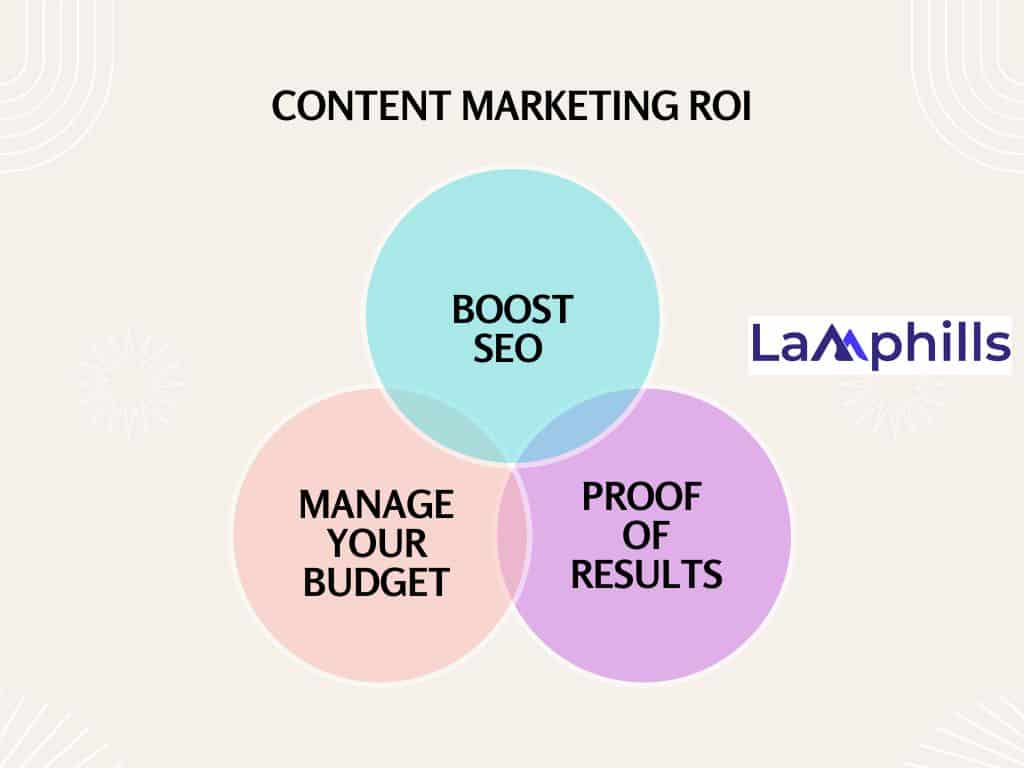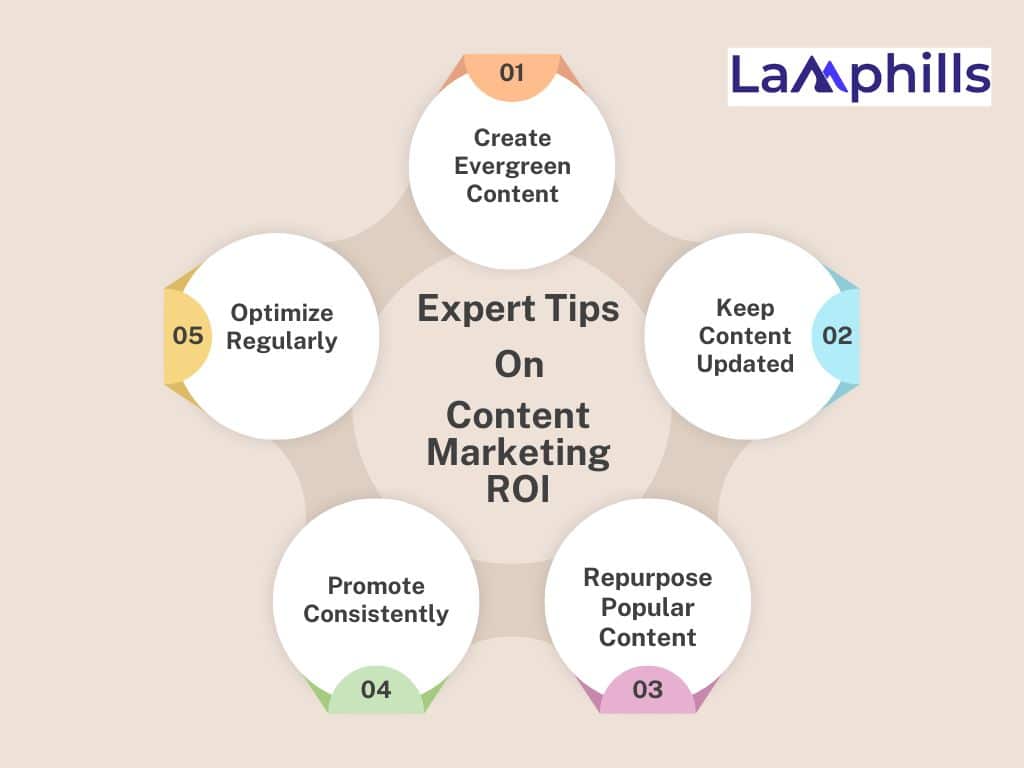Measuring the ROI of your content marketing efforts is crucial for understanding how your content impacts your business. By regularly monitoring your key performance indicators (KPIs), you can track your content’s performance and make smarter decisions to boost your results.
When I first started with content marketing, I was really excited. I wrote articles, posted on social media, and shared videos everywhere. I thought the more content I created, the better it would be. But after months of working hard, I started to wonder: Is this actually working? That’s when I learned about Content Marketing ROI (Return on Investment), and it completely changed how I approached my strategy.
In this article, I’ll explain content marketing ROI, why it matters, and how you can measure it. Whether you’re just starting or looking to improve, knowing about ROI is important to ensure your efforts are worth it.
Keep reading.
Key Points
- Content Marketing ROI is the value you earn from your content compared to how much you spend making and sharing it. It helps you see if your content is really bringing in money or wasting your budget.
- Before measuring success, decide what you want your content to achieve, such as boosting traffic or generating leads. This will help you track progress and improve results.
- Monitor important metrics like website traffic, lead generation, and conversion rates to see how well your content performs.
- Track the revenue your content brings in. Ignoring this can make it difficult to determine whether your content marketing is worth the cost.
- Repurpose top-performing content, optimize regularly, and use the right distribution channels to get the best results from your content marketing efforts.
What is Content Marketing ROI?
Content Marketing ROI is simply the amount of money or value you earn from your content compared to how much you spend making and sharing it. It’s about measuring the return you get on your content marketing investment.
Let’s say I spent $500 creating blog posts, videos, and social media content and earned $1,500 in sales or business opportunities. My content marketing ROI would be the difference between what I earned ($1,500) and what I spent ($500), giving me a positive ROI of $1,000.
Note: Content can be anything you share online. Some examples of different types of content are:
- Blog posts
- Articles
- Email campaigns
- Social media posts
- Infographics
- Videos
- Slideshows and presentations.
Now, why does this matter? It shows if your content is bringing in more value than it costs. If you’re spending more than you’re earning, it’s a sign to change your approach.
Content ROI also helps you understand how well your content brings in new leads, boosts website traffic, and achieves other business goals. To calculate your content’s ROI, simply compare the money made from your content marketing efforts with the costs of creating and sharing that content.
Now see more reasons why it’s important to measure your content marketing ROI
Why it’s important to measure your content marketing ROI

Measuring your content marketing ROI is important because it shows how well your content is performing in bringing in sales and money for your business. By calculating the return on your content, you can see which campaigns are working, where you’re losing money, and what changes can be made to improve results.
In fact, 70% of marketers who succeed with content marketing say they measure their returns.
This information helps you make smart decisions about where to spend your money and resources for the best results. Measuring the return on investment (ROI) from your content marketing can help your business in these ways:
#1. Boost SEO
SEO helps your website get noticed by search engines so it shows up higher in search results. Knowing how your content marketing performs enables you to see which pages work well for SEO.
#2. Manage your budget
Your goal as a business is to spend money on things that bring in more revenue. ROI gives you the data you need to make smart decisions about where to invest your money.”
#3. Proof of Results
By tracking your content marketing ROI, you can show your company or clients that your efforts are bringing real results and helping achieve business goals. This helps justify the time and money spent on creating the content.
#4. Identify the best (and worst) content types
Looking at your content marketing ROI can show you which types of content, platforms, and tactics are working best and which ones aren’t worth the effort.
With a clear idea of what’s successful and what’s not, you can use the data to improve your strategy and focus on the areas that give the best results.
Understanding and tracking content marketing ROI helps me see if my content is working to grow my business. If I notice my ROI is low or negative, it’s a sign to adjust my approach. Maybe I need to try new topics and different formats or invest more in promotion.
On the other hand, when I see a positive ROI, it encourages me to keep going and even increase my efforts. It feels great to know that my content is helping both my audience and my business.
Here’s the exciting part: measuring your content marketing ROI. It’s not just about dollars and cents. There are other things to look at to see if your content is truly helping your business grow.
How to Measure Content Marketing ROI

As mentioned earlier, the cost of creating and promoting your content, along with the revenue it brings in, are key factors in measuring content marketing ROI. That’s why it’s important to have suitable systems and clear goals to track these numbers accurately.
Here are seven simple steps to measure your content marketing ROI.
#1. Set Your Content Marketing Goals
Before knowing if you’re doing well, you need to decide what “doing well” means. When I first began, I didn’t set clear goals, and I was just creating content without any purpose. It wasn’t until I set specific goals like boosting my website traffic by 20% or gaining 50 new leads that I could see how far I’d come.
Setting goals for your content marketing is important because it helps you see what success looks like and measure your return on investment (ROI). With clear goals, you can track your progress and make changes to your plan if needed.
Without specific goals, you might create content that doesn’t connect with your audience or deliver actual results, wasting time and resources.
Start by thinking about your business goals.
What do you want your content marketing to achieve? Is it generating leads, driving more traffic to your website, or building brand awareness? Maybe you want to establish your business as a leader in your field.
Setting clear, measurable goals that match your overall business objectives will give you a way to measure success. If you’re not hitting your targets, you can adjust your strategy to improve and get better results.
For example, a content marketing goal could be to increase website traffic by 20% in the next three months by creating quality blog posts and sharing them on social media. This is a clear and measurable goal. By tracking how much traffic your website gets, you can see if your content marketing is working and make adjustments if needed.
#2. Set Your Content Marketing Goals and KPIs
After choosing your content marketing goals, the next step is to set Key Performance Indicators (KPIs) to track your progress. KPIs are specific numbers that show how well your content is performing.
Tracking these numbers helps you see what’s working and lets you make decisions based on real data. Without KPIs, it’s hard to know if your content marketing is successful or worth the investment.
Your KPIs should be clear, measurable, and match the goals you set in the first step. For example, if your goal is to get more leads, you might track the number of leads, how well your lead magnets are working, and how much each lead costs.
To measure your content’s ROI, start by identifying the metrics and KPIs you want to track. These could include website visitors, social media engagement, lead generation, and revenue. Then, tools like Google Analytics, social media analytics, and marketing software can be used to set up tracking for these KPIs.
To help you track your content marketing success, I’ve created a simple KPIs Tracker Template. This template will make it easier for you to monitor important numbers like website traffic, bounce rate, and conversion rate. By filling it out regularly, you’ll be able to see how well your content is performing and spot areas where you can improve. Download the template below and start measuring your progress today!
#3. Set Up Content Tracking
Tracking your content is key to understanding the return on investment (ROI) from your content marketing. Without proper tracking, it’s hard to know what’s working and what’s not, leaving you guessing about your results.
You can use tools like Google Analytics or Adobe Analytics to track how well your content is performing. These tools help you monitor important actions like form submissions, email sign-ups, and other leads. Connect your tracking tools with customer management (CRM) or e-commerce platforms to track how much money your content brings in.
Social media analytics tools are useful for tracking engagement and traffic on your social platforms. You can also use UTM codes to figure out where your traffic is coming from and how well different marketing channels are working.
Setting up content tracking will give you the data you need to easily see how much money your content is making compared to how much you’re spending on it.
Here’s a simpler version of your text:
#4. Track revenue and business results
Just like knowing how much you spend on content, measuring how much money you make from it is important. Without tracking your content’s revenue, it’s hard to understand your return on investment (ROI). Over time, it will be difficult to explain why you spend money on content creation and promotion.
To determine how much money your content generates, you need to examine how it generates revenue. These could include sales from leads, ad sponsorships, or other income sources.
Many marketers ignore leads when calculating content ROI, but this is a mistake. If you know the average value of a sale and your lead conversion rate, you can estimate the revenue from those leads.
For example, if you have 100 leads, a conversion rate of 3.5%, and an average sale value of $75, the value of 100 leads is 3.5 sales x $75, which equals $263. So, each lead is worth $263 divided by 100 leads, or $2.63.
You can also estimate the revenue value of each lead based on past conversion rates or the average lifetime value of a customer. Multiply the number of leads by the revenue value to figure out the potential earnings from your content marketing efforts.
By tracking how much money each content campaign, like blog posts, webinars, or whitepapers, makes, you can see which types of content bring in the most revenue. You’ll still need to measure ROI to find out which strategy was the most profitable.
#5. Measure revenue and business results
Just like tracking how much you spend on content, measuring how much money your content marketing brings in is important to figure out your ROI. If you don’t know how much your content earns, it’ll be hard to know if your content marketing is worth the cost.
Start by identifying the different ways your content makes money. This could include sales from leads generated by your content, income from ads or sponsorships, and other sources of revenue.
A common mistake is ignoring leads when measuring content marketing ROI, but you shouldn’t do this. If you know how much an average sale is worth and how many leads turn into sales, you can estimate how much money those leads are likely to bring in.
For example, if you have 100 leads, a 3.5% conversion rate, and an average sale of $75, then 3.5 leads will convert into sales. Multiply that by $75, which gives you $263. So, each lead is worth about $2.63.
You can also assign each lead a potential value based on past conversion rates or the average lifetime value of a customer. Multiply the number of leads by this value to estimate the potential revenue from your content.
You can see which content and platforms are most profitable by tracking how much money each content campaign (like blog posts, webinars, or whitepapers) brings in. You’ll still need to calculate ROI to know which one brought the best results.
#6. How to Calculate Content Marketing ROI
To figure out how much you’re getting back from your content marketing, subtract the amount you spent from the amount you earned, then divide by what you spent. Here’s the formula:
For example, if you spent $10,000 on content marketing and made $50,000 in revenue, your ROI would be:
- 7 times
- 700%
- 7:1
This means that for every dollar you spend, you earn seven dollars. Pretty good, right?
Measuring your content marketing ROI is important because it helps you see how well your strategy is working, spot areas for improvement, and adjust to get better results. By tracking key numbers and calculating ROI, you can see what’s working and what’s not and make better choices for future content.
It also helps you show the value of your marketing to others, like stakeholders, and gain their support for increasing your budget for future projects.
#7. Monitor and analyze your content marketing ROI
It’s important to regularly check how well your content marketing is working because customer preferences can change with industry trends. By tracking key numbers often, you can spot patterns in how people are behaving and make changes before it start to hurt your results.
Watching your ROI in real time helps you see how successful your campaigns are and where you might need to improve. If you don’t track your content marketing’s ROI, you could end up wasting time and money and miss chances to get better results from your efforts.
Without tracking ROI, you may not realize when your campaigns are underperforming, which can lead to less web traffic, fewer people engaging with your content, and fewer sales, all of which can hurt your business.
It’s also important to keep measuring your ROI if your business makes money through subscriptions or recurring payments. You can compare how much it costs to get a customer with how much money they bring in over time to see how long it takes to break even and start making a profit.
For example, if it costs you $1000 to get one customer through content marketing, and that customer stays with you for 9 months, paying $200 each month, their total value to you is 9 months x $200, which equals $1800.
In this case, your ROI would be 1.8 times or 180%. If you only measured their first purchase, you’d think your return was a negative 80%, which wouldn’t be accurate.
To help you see if your content marketing is paying off, I’ve created a simple Content Marketing ROI Calculator Template. This template lets you easily track how much you’re spending on content and how much money it’s bringing in. By using this calculator, you’ll know if your content is worth the investment and where you can improve. Download the template below and start calculating your ROI today!
Key Metrics In Content Marketing
When it comes to content marketing, tracking the right numbers is essential. These key metrics help you understand if your content is reaching your audience and achieving your goals. From website traffic to engagement rates, knowing what to measure lets you see what’s working and where you can improve.
Let’s explain the most important metrics:
#1. Website Traffic
This measures how many people visit your website. It’s like counting the number of people who walk into a store. The more visitors, the more likely you are to engage them with your content. Tools like Google Analytics help you track the number of visits, where they come from, and which pages are most popular.
#2. Bounce Rate
The bounce rate tells you how many people leave your website after viewing only one page. A high bounce rate can mean that visitors didn’t find what they were looking for or weren’t engaged enough to explore more. Reducing this rate is a good sign that your content is relevant and engaging.
#3. Time on Page
This metric shows how long visitors spend on a specific page of your website. If visitors spend a lot of time on a page, it usually means they’re interested in the content. If they leave quickly, you might need to improve the content to hold their attention.
#4. Conversion Rate
Conversion rate measures how many visitors take a specific action after viewing your content, like signing up for a newsletter, downloading a guide, or making a purchase. A higher conversion rate means your content is effective in motivating people to take action.
#5. Engagement
Engagement refers to how often people interact with your content. This includes likes, shares, comments, and time spent reading or watching your content. High engagement means your audience finds your content interesting and valuable.
#6. Lead Generation
Lead generation counts how many new leads (potential customers) you get through your content. If people sign up for your email list or fill out a contact form after reading your blog post or watching your video, that’s a lead. Generating more leads means your content is helping to grow your customer base.
#7. Social Shares
This tracks how many times people share your content on social media platforms like Facebook, Twitter, or LinkedIn. If your content is being widely shared, it means people find it valuable enough to show others, which helps spread your message.
#8. SEO Performance (Organic Traffic)
This measures how well your content performs in search engines like Google. If your articles rank high for relevant keywords, you’ll attract more visitors without having to pay for ads. Good SEO means more people are finding your content naturally through search.
#9. Click-Through Rate (CTR)
CTR measures how many people click on a link or call-to-action (CTA) in your content. It’s a sign of how effective your content is at encouraging visitors to learn more, whether it’s clicking to another page, a product, or a signup form. A higher CTR means your content is compelling.
#10. Customer Retention
Customer retention shows how well your content keeps your current customers engaged. It’s easier and cheaper to keep existing customers than to find new ones. If your content continues to provide value, customers are more likely to stay loyal to your brand.
These metrics help you understand what’s working and what needs improvement in your content marketing strategy. By tracking them, you can make better decisions and improve your results over time.
How to Improve Content Marketing ROI- Expert Tips.

Once you’ve figured out how to calculate your content marketing ROI, the next step is improving it. Here are some expert tips to help boost your ROI:
#1. Create Evergreen Content
Focus on producing relevant content over time and delivering value to your audience. Understand what they need from you rather than focusing on what you want from them.
#2. Keep Content Updated
Regularly refresh your content to keep it relevant and encourage search engines to index your site more often. Make sure your sitemap is submitted correctly to Google.
#3. Repurpose Popular Content
Take your top-performing content and present it in new formats. For example, turn a popular blog post into an eBook, video tutorial, or infographic.
#4. Promote Consistently
Don’t just create content; promote it regularly and track engagement. This often gets overlooked when there’s a lot of content to produce, so make it a priority.
#5. Optimize Regularly
Update pillar pages and key guides with fresh links, current stats, and new opportunities to improve the user experience.
#6. Test Different Versions
Experiment with different titles, calls to action, or images to see which versions of your content perform best.
#7. Use the Right Distribution Channels
If your email newsletters aren’t performing well, try other platforms to share your content. You may also need to rethink your email strategy.
#8. Understand User Intent
Analyze visitor behavior to understand why people are coming to your website. If they’re looking for specific answers, prioritize that content at the top of the page. This can help reduce bounce rates and improve search rankings.
#9. Review Your Keyword Strategy
Regularly check if you’re targeting the right keywords. If some are too competitive, focus on more achievable ones, especially those that help you rank for Google’s Answer Box.
#10. Improve Visitor Experience
It’s not enough to drive traffic; you need to engage visitors from when they land on your site or app. Make sure their journey is smooth and enjoyable.
#11. Think Holistically
Remember that all your marketing activities, website content, social media, SEO, PR, and paid ads are interconnected. They work best when seen as part of a larger, unified strategy.
#12. Stay Flexible
Update your strategy to reflect changing audience needs, market trends, and new tools. Being adaptable will keep you ahead of the curve.
By following these steps, you’ll set yourself up for long-term success with your content marketing efforts.
Bottom Line.
Content marketing is a powerful tool, but without tracking your ROI, it’s easy to lose track of whether your efforts are truly paying off. By setting clear goals, tracking key metrics, calculating ROI, and using the right tools, you can ensure that your content drives real success for your business.
Understanding your content marketing ROI means making smart decisions that lead to growth. And trust me, once you figure this out, content marketing becomes fun and highly rewarding.
So, take the time to measure your success, and you’ll thank yourself later!
Frequently Asked Questions.
What is a good return on investment (ROI) for marketing?
A good marketing ROI means getting five dollars back for every dollar you spend or a 5:1 ratio. If you get ten dollars for every dollar spent or a 10:1 ratio, that’s considered excellent.
What is the ROI of SEO marketing?
The ROI of SEO shows how much money you made compared to what you spent on your SEO efforts. If your SEO campaign brings in more money than it costs, you have a positive ROI.
What is the ROI of Digital Marketing?
ROI in digital marketing tells you how much profit or loss you make from your online marketing efforts. You can calculate it using this simple formula:
(Net Profit / Total Digital Marketing Costs) x 100.
What are KPIs in SEO?
SEO KPIs (Key Performance Indicators) are specific measurements used to check how well your SEO efforts are working. These KPIs help you understand how visible your website is, how much organic traffic it gets, how well your keywords are ranking, how engaged users are, and how many visitors are converting into customers.
What is a KPI in Digital Marketing?
KPIs (Key Performance Indicators) are numbers that show how well a digital marketing campaign is performing. These indicators help you see whether your strategies are reaching your goals or falling short. It’s important to keep an eye on these KPIs, as they can change depending on the campaign’s performance.
What is KRA in digital marketing?
Key Results Areas (KRAs) in digital marketing are specific goals or numbers that help you see how well your digital marketing is doing. Setting clear KRAs is important for keeping your team on the same page, checking progress, and reaching your overall business goals.
Similar Articles.
Best Practices for Creating a Lead Generation Website for High ROI.
The Complete Guide to Marketing Audit: What It Is, Why You Need It and How to Do One
Push vs. Pull Marketing Strategies: Which One Drives Better Results?






